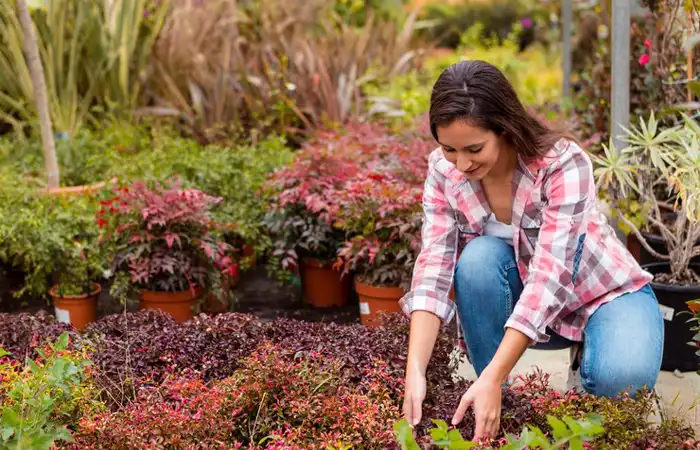
Blog
How to Design a Garden That Is Pollinator Friendly

Because they enable the reproduction of blooming plants, which includes a large number of the fruits, vegetables, and nuts that we depend on for sustenance, pollinators serve an essential role in our environment. However, owing to habitat loss, pesticide usage, climate change, and other causes, pollinator populations which include bees, butterflies, hummingbirds, and other insects are significantly declining. Making a garden that is hospitable to pollinators is one way that people can support these important species while simultaneously making their outside area seem beautiful. These are some pointers for making a garden that is both beneficial to and attracts a wide variety of pollinators..
Select Local Plants.
Pick Local Wildflowers
Native plants are highly adapted to the demands of pollinators since they have developed alongside them. To give pollinators a steady supply of nectar and pollen throughout the growing season, select a range of natural wildflowers, shrubs, and trees that bloom at various times.
Examine local plant species
Do some research on local native plant species that are known to draw pollinators. Seek for plants that are pest and disease resistant, as well as suitable to the soil and climate of your area.
Supply nourishment and shelter.
Grow a Variety of Flowers
To draw in a range of pollinators, plant a broad selection of flowers in various hues, forms, and sizes. Add hummingbird attracting tubular flowers, butterfly attracting flat landing pads, and bee attracting clustered blossoms.
Add the host plants
Add the host plants
Incorporate host plants into your garden that, throughout their life cycle, offer pollinators food and a home. Plant dill for swallowtail butterflies, parsley for black swallowtail butterflies, and milkweed for monarch insects, among others.
Establish Nesting Sites and Shelter.
Offer Covered Spaces
Make sure your garden has protected spots where pollinators may go to avoid the wind, rain, and predators. To give pollinators a place to nest and cover, install butterfly shelters, bee hotels, or birdhouses.
Give Some Areas Away
To offer ground nesting bees and other insects with places to nest, keep certain areas bare of ground or covered with natural detritus such as fallen leaves, twigs, and grass clippings.
Avert using herbicides and pesticides..
Steer clear of chemical pesticides.
Chemical pesticides and herbicides should not be used in your garden since they might damage beneficial insects such as pollinators. usage natural pest management techniques instead, such as hand picking bugs, drawing in beneficial insects, and saving your usage of organic pesticides for extreme situations.
Apply Integrated Pest Control.
Utilize integrated pest management IPMÂ strategies to manage pests while reducing damage to beneficial insects like as pollinators. To lessen insect damage naturally, this may involve the use of physical barriers, crop rotation, and companion planting.
Supply Water Sources.
Incorporate Water Elements
Incorporate water elements into your landscape, such as birdbaths, tiny ponds, or shallow dishes, to give pollinators access to clean water for bathing and drinking.
Maintain a Shallow Water Level
To make it simpler for pollinators to reach the water safely, keep water sources shallow and provide landing pads made of pebbles or floating plants.
Keep Up Your Garden.
Continual Upkeep
To keep plants healthy and growing, regularly manage your garden by watering, pulling weeds, and trimming as necessary. Remove wasted blooms to stop the spread of illness and deadhead flowers to promote continued flowering.
Observe for diseases and pests
Regularly check your garden for indications of pests and illnesses, and take the necessary steps to remedy any issues as soon as they arise. To stop the spread of pests and illnesses, get rid of unhealthy plants, manage pest infestations organically, and maintain proper garden cleanliness.
Instruct and Promote.
Teach Others
Inform people on the value of pollinators and the actions they may take to establish environments that are favorable to pollinators in their own yards and neighborhoods.
Promote the Protection of Pollinators
Promote laws and programs that protect pollinators, such as those that restore habitat, control pesticide use, and increase public awareness.
In summary.
In addition to being good for pollinators, creating a pollinator friendly garden also improves the overall health and vitality of your garden ecosystem. You may assist pollinators and aid in the survival of these vital organisms by selecting native plants, offering food and habitat, building shelter and nesting places, avoiding pesticides and herbicides, providing water sources, caring for your garden, and educating others. Now get dirty, roll up your sleeves, and prepare your garden for a plethora of pollinators.
4 Comments
Leave a Reply














Noah
Thanks for the fantastic ideas!
James
Thanks for the great tips overall.
Charles
Keep up the great work!.
Marie Johnson
Thank you for the detailed tutorial and creative ideas!